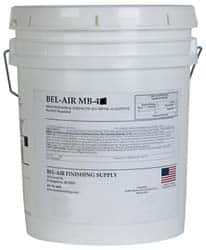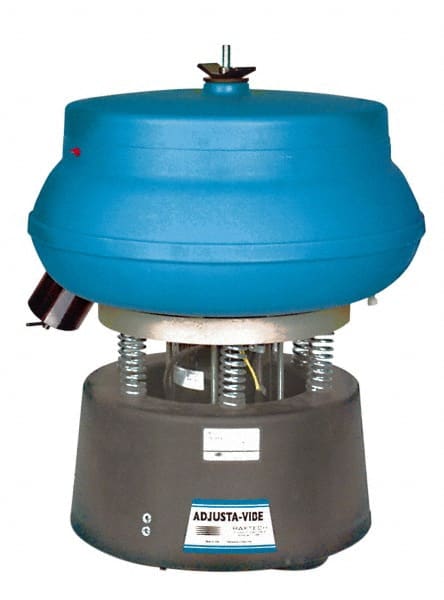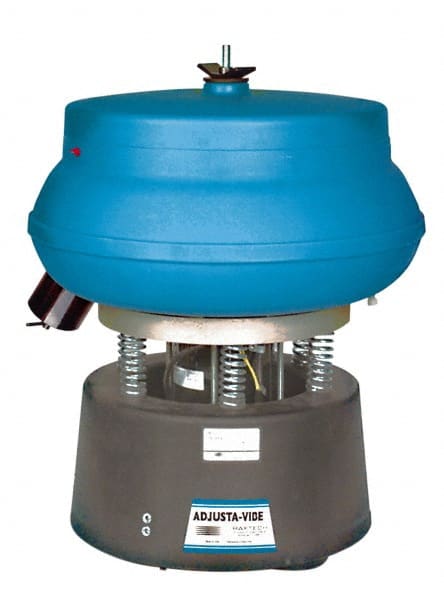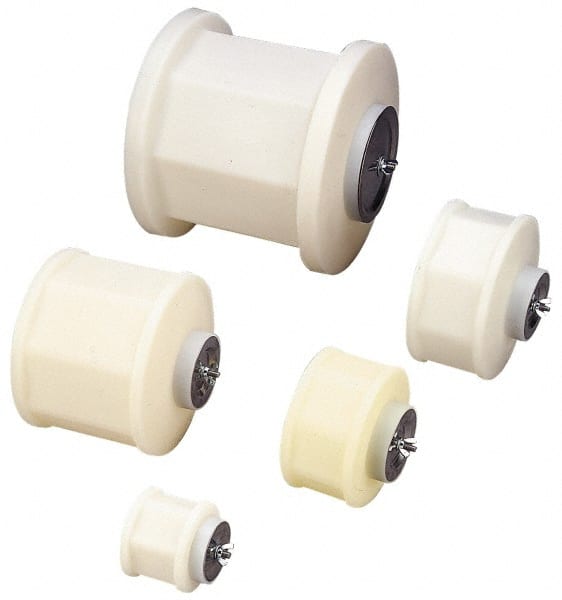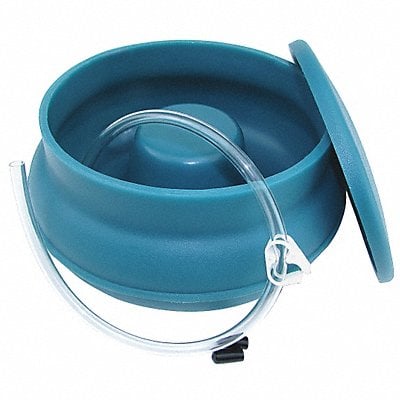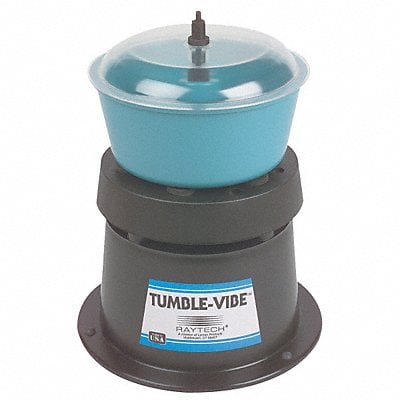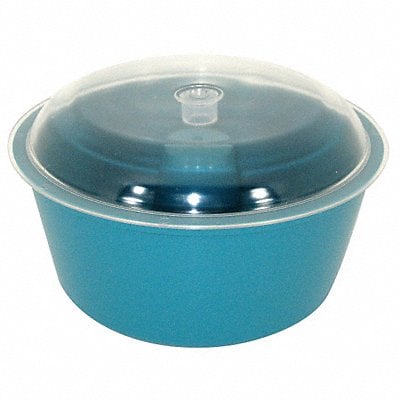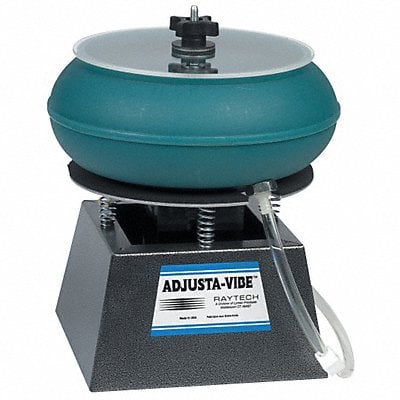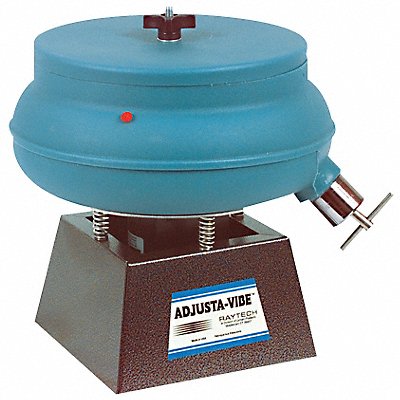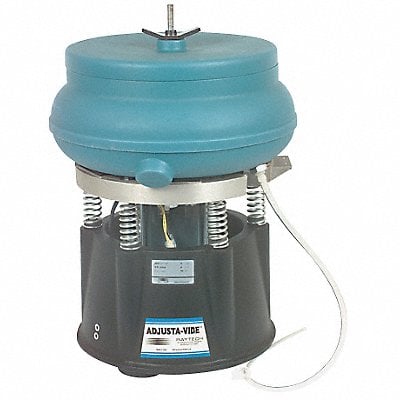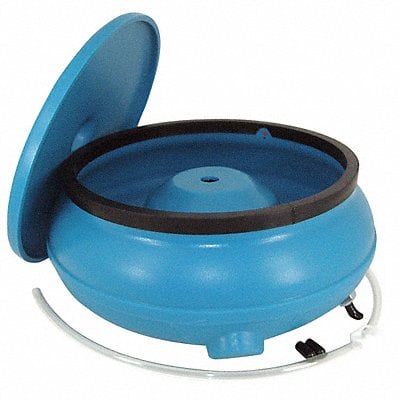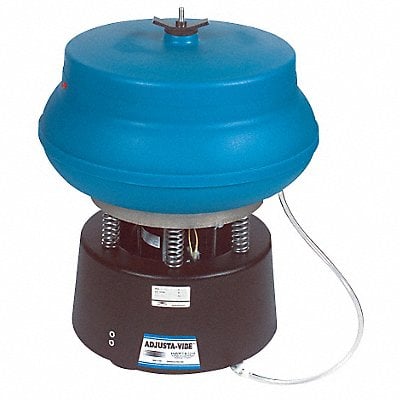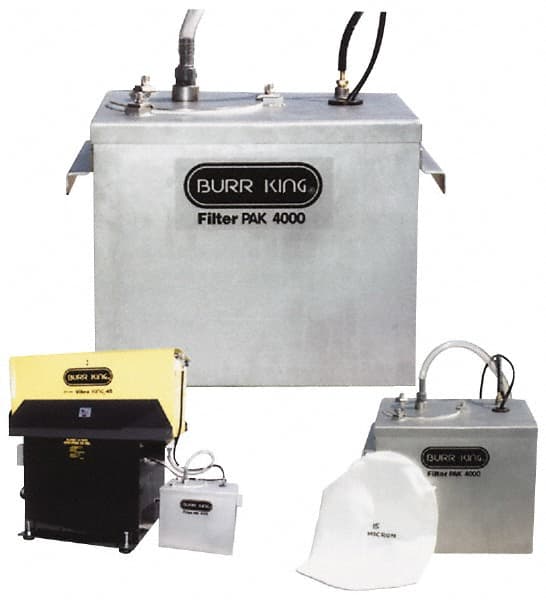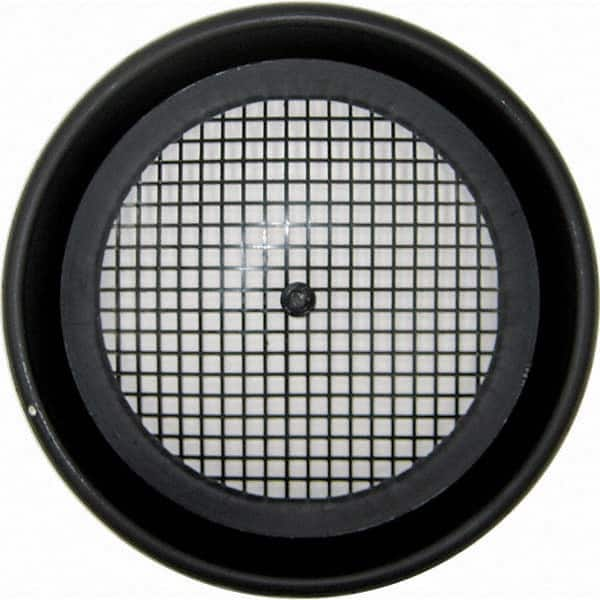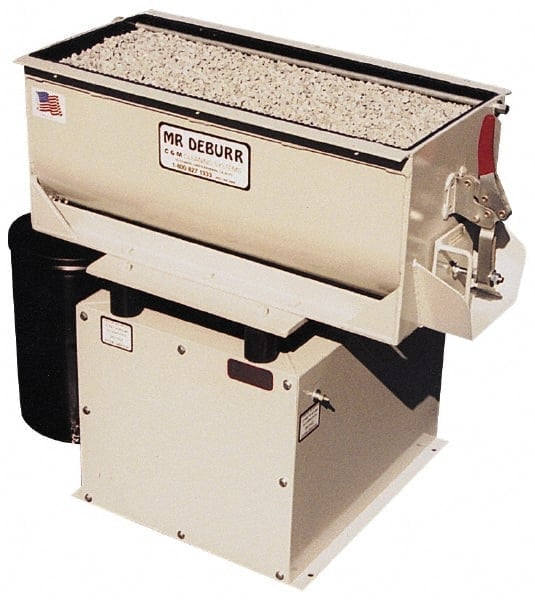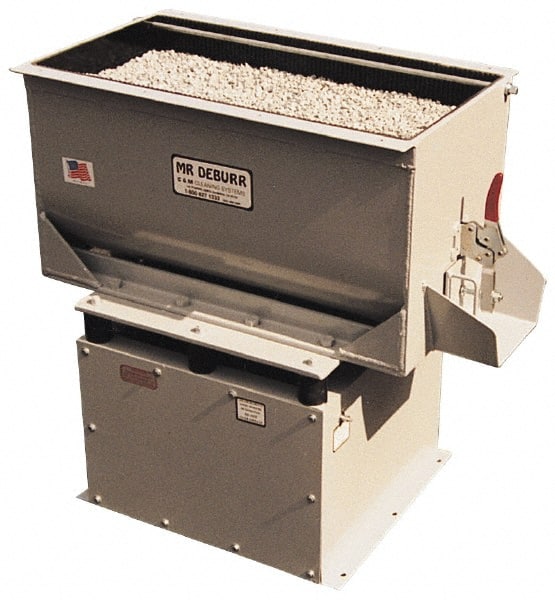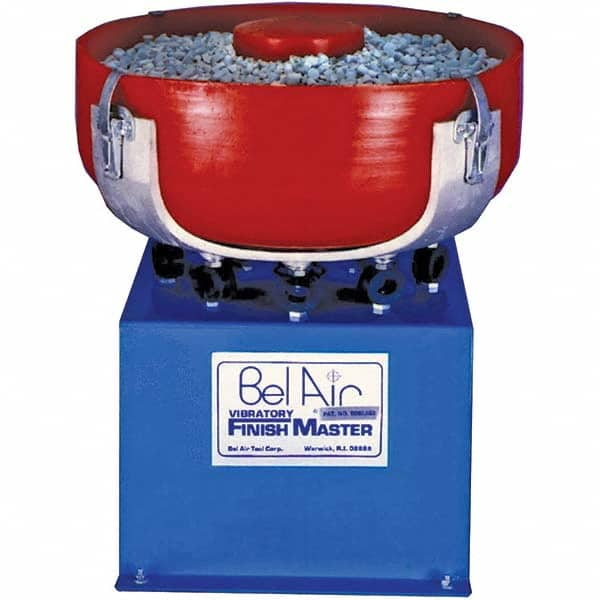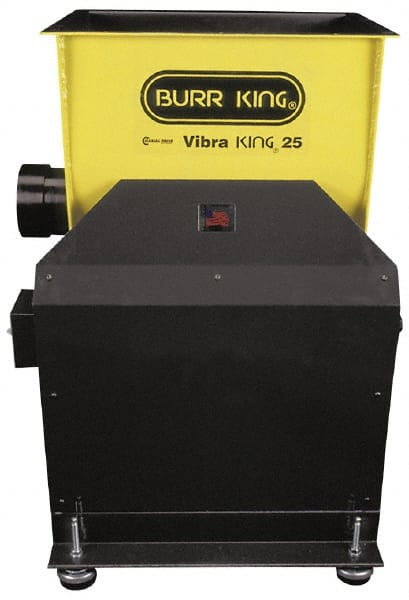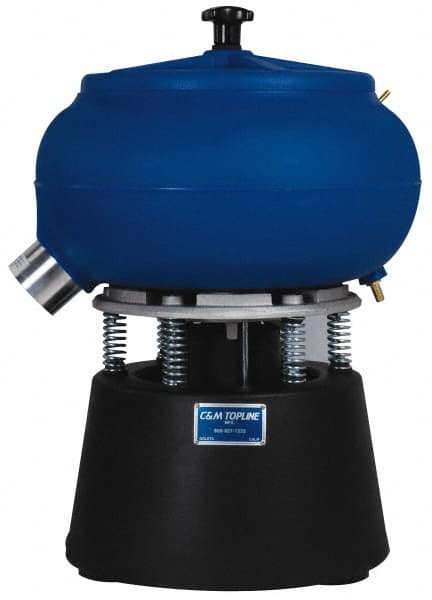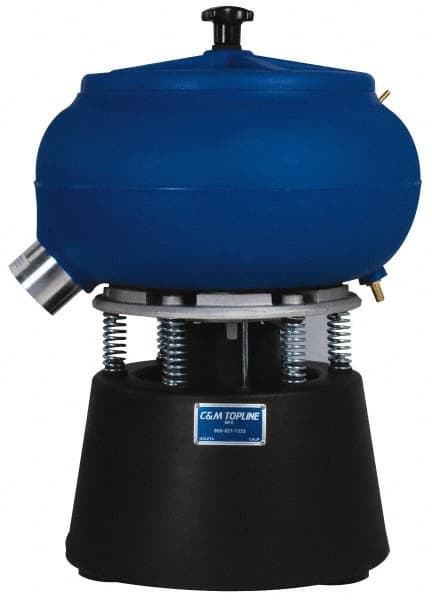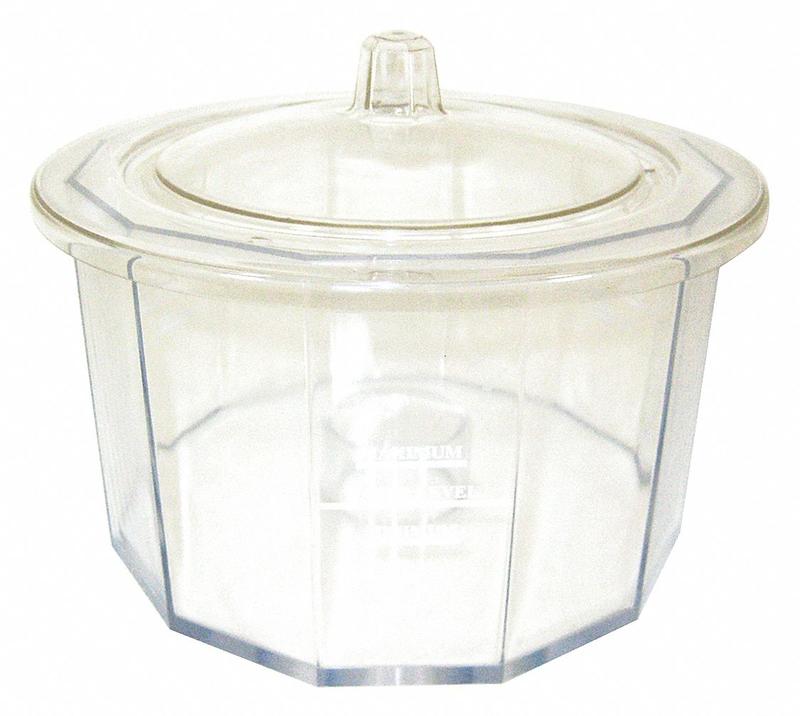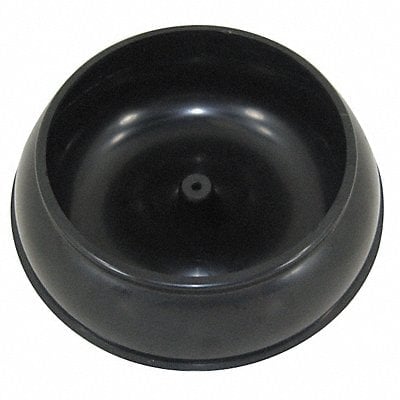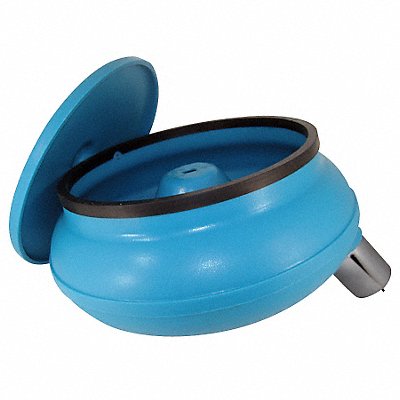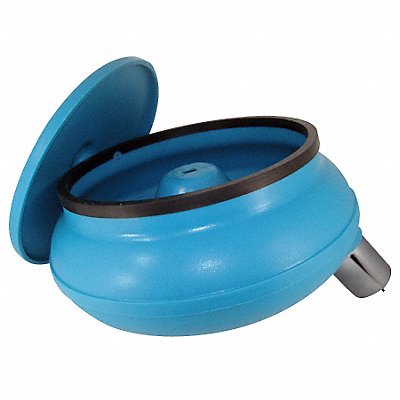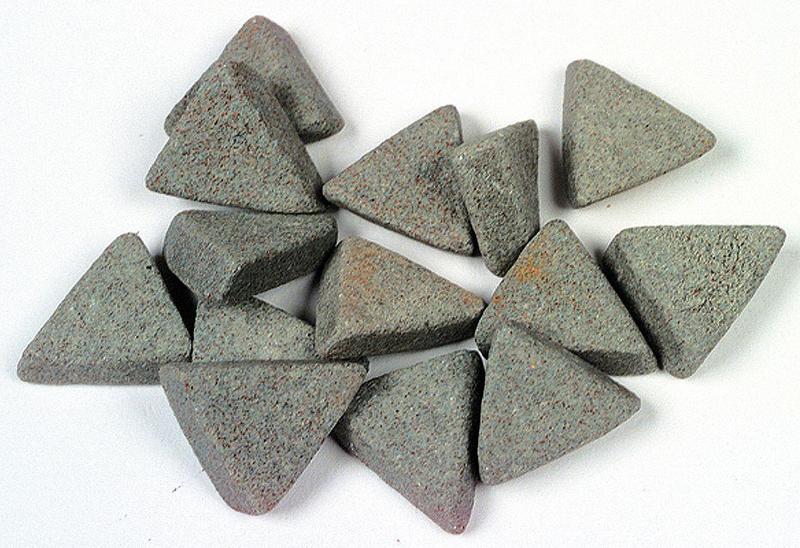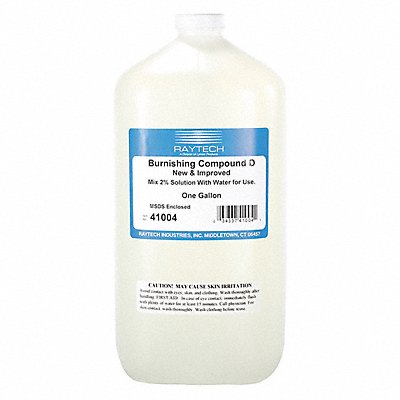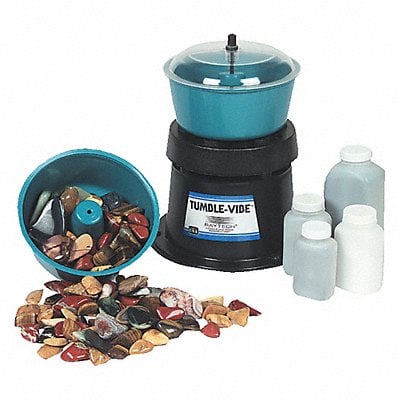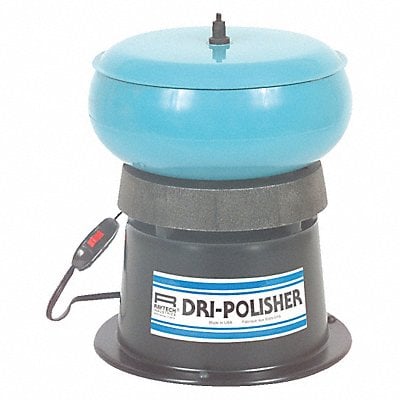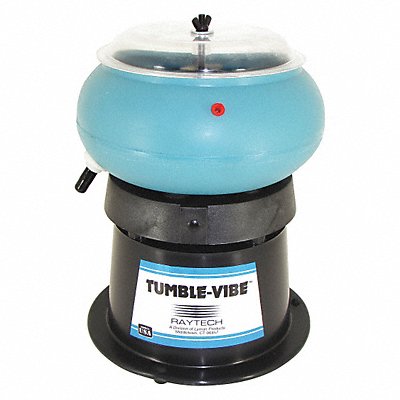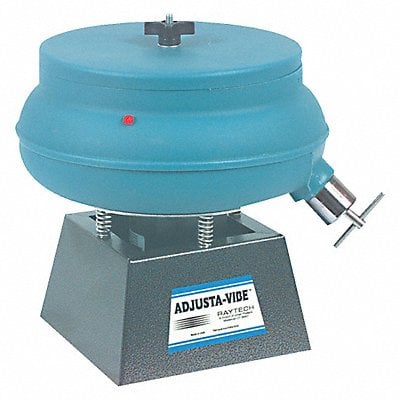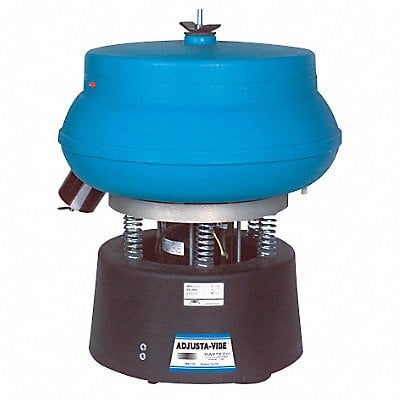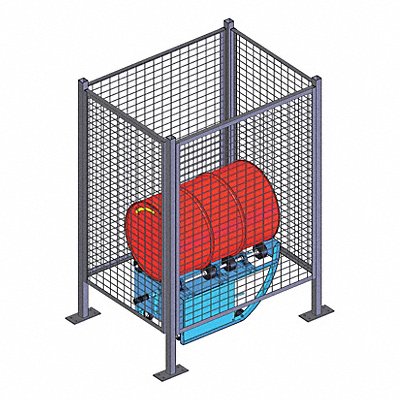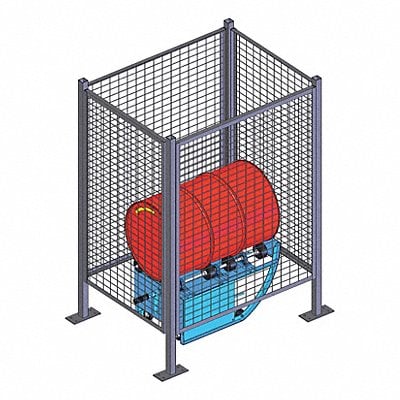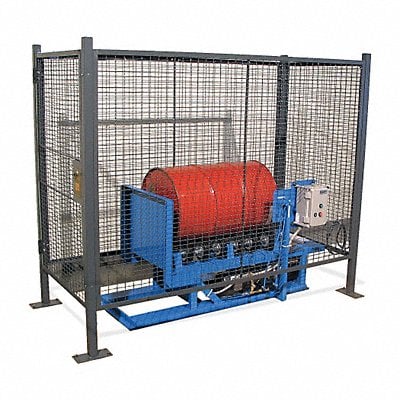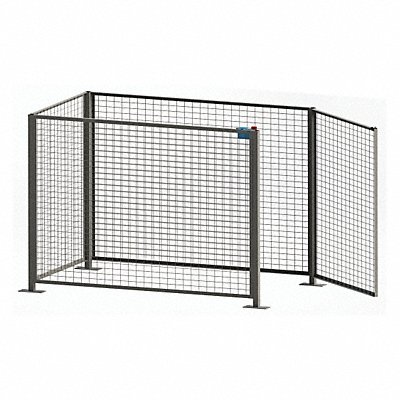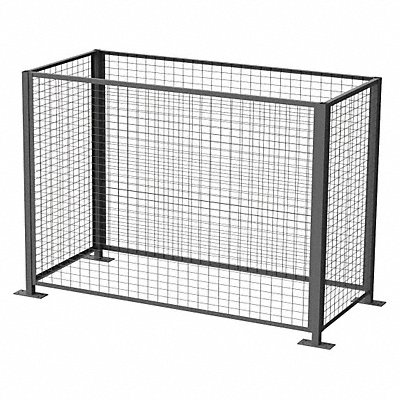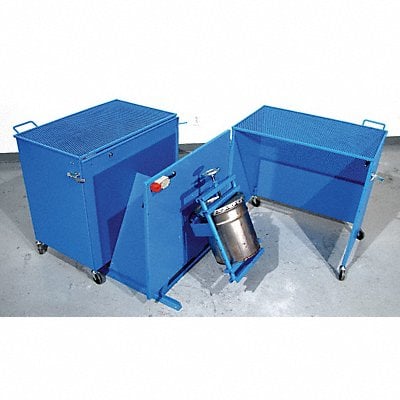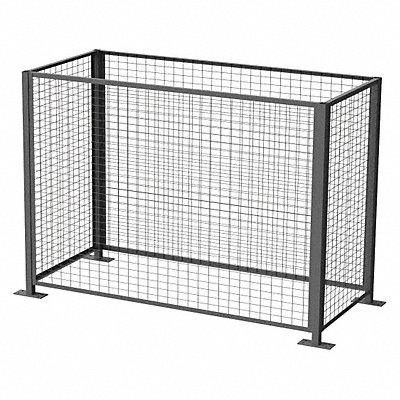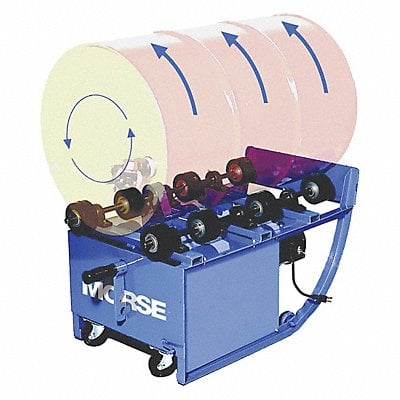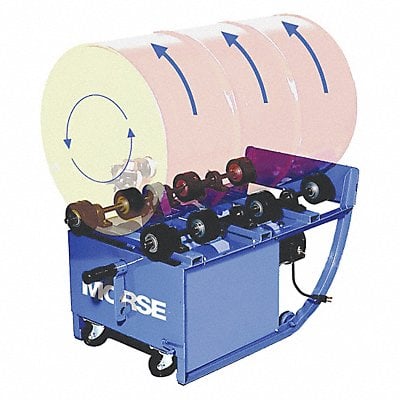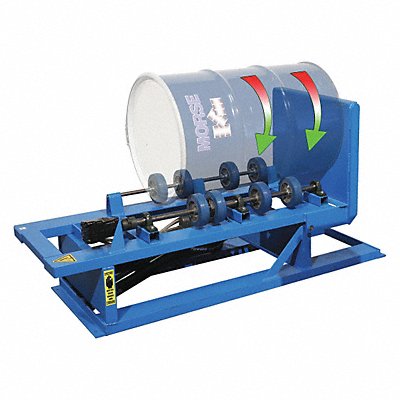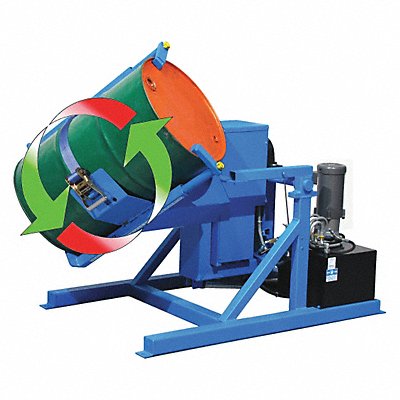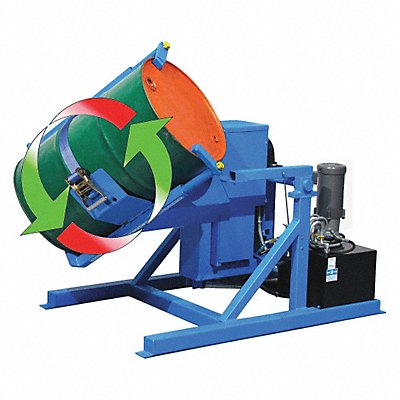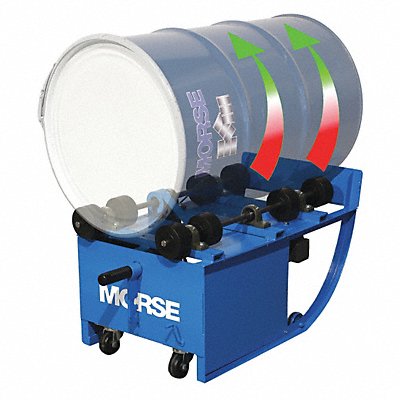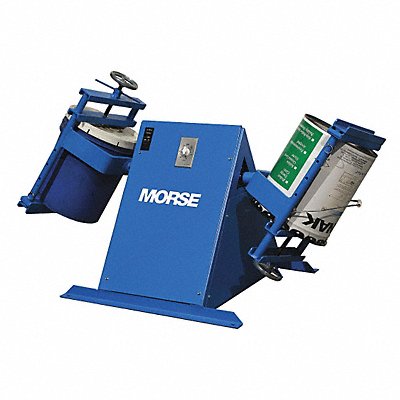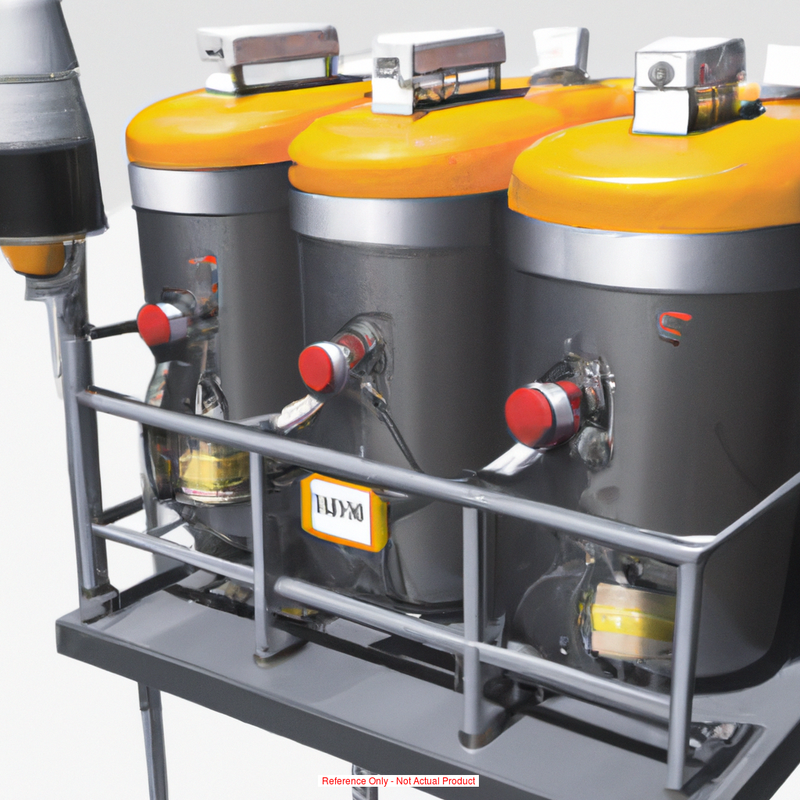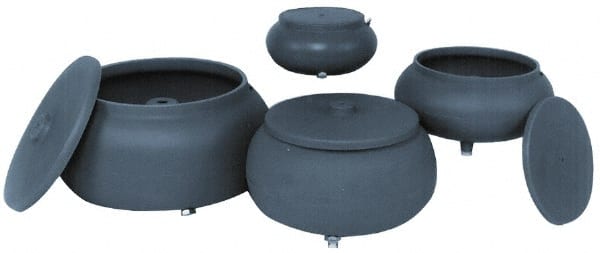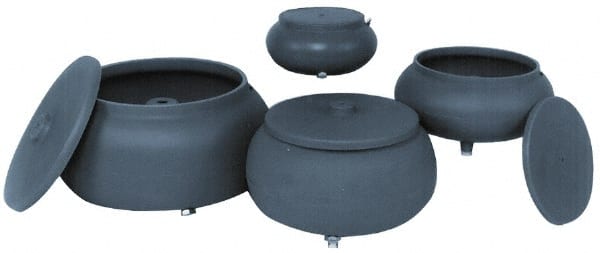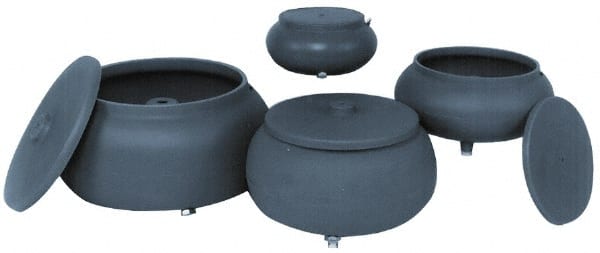Unveiling the World of Tumblers: Evolution, Applications, and Benefits

Overview
In the world of DIY enthusiasts, hobbyists, and small businesses, tumblers have emerged as indispensable tools, offering a myriad of applications and benefits. In this comprehensive blog, we take you on a journey through the fascinating realm of tumblers, exploring their evolution over centuries, their diverse applications, and how they enhance DIY projects and small businesses. From the top 25 reasons to use tumblers to a product category tour, this blog is your ultimate guide to understanding why these versatile machines are not only popular but also essential.
Table of Contents
Part 1 - Overview of Tumblers: Why They're Popular and Important
Part 2 - Top 25 Reasons for Using Tumblers
Part 3 - Enhancing DIY Projects and Small Businesses with Tumblers
Part 4 - Tumbler Product Category Tour
Part 5 - The Evolution of Tumblers Throughout the Ages: A 2000-Year Journey
Part 1 - Overview of Tumblers: Why They're Popular and Important
Tumblers, often considered unsung heroes in various industries, are versatile machines that serve a multitude of purposes. These cylindrical devices, equipped with a rotating or vibrating mechanism, may seem unassuming, but their significance cannot be overstated. In this section, we'll explore the reasons behind the popularity and importance of tumblers.
1.1. The Multifaceted Utility of Tumblers
One of the key factors contributing to the popularity of tumblers is their adaptability. Tumblers are employed in a wide array of industries and applications, ranging from industrial manufacturing to hobbyist pursuits. Their versatility makes them indispensable tools for achieving various objectives. Here's why they are so widely embraced:
a. Surface Finishing and Polishing
Tumblers are renowned for their ability to transform rough and uneven surfaces into smooth and polished ones. This is particularly crucial in industries where the aesthetic appeal of a product matters, such as jewelry-making, automotive manufacturing, and aerospace engineering. The process of tumbling involves the use of abrasive media, which, when applied to the surface of materials like metal or stone, gradually erodes imperfections, leaving behind a flawless finish.
b. Deburring and Edge Radiusing
In manufacturing, precision is paramount. Tumblers are highly effective at deburring, which involves removing sharp edges, burrs, and unwanted material from workpieces. This process ensures that components fit seamlessly together, reducing the risk of injuries and enhancing the functionality of the end product. Edge radiusing, a specific form of deburring, is essential for achieving rounded and safe edges on materials like metal or plastic.
c. Cleaning and Surface Preparation
Tumblers are efficient at cleaning various objects, from shell casings and industrial parts to archaeological artifacts and jewelry. By employing tumbling media and cleaning solutions, contaminants, rust, and oxidation are effectively removed, leaving behind clean and pristine surfaces. This aspect is vital for maintaining the quality and reliability of components across industries.
d. Mass Finishing for Efficiency
For industries that rely on high-volume production, tumblers provide a means of achieving consistency and efficiency. Mass finishing techniques involve tumbling multiple parts simultaneously, streamlining the production process. This not only reduces labor costs but also ensures uniform quality across a large number of components.
e. Creative Artistry and Craftsmanship
Beyond industrial applications, tumblers find a place in the world of art and craftsmanship. Artists, jewelry makers, and artisans use tumblers to create unique textures and finishes on their creations. Tumblers allow for experimentation with different media and additives to achieve artistic visions.
1.2. The Importance of Tumblers in Modern Industry
Tumblers are more than just tools; they are essential components of modern industry for several compelling reasons:
a. Quality Assurance
In industries where precision and quality are non-negotiable, such as aerospace and medical device manufacturing, tumblers play a crucial role in quality assurance. They help ensure that components meet stringent standards, resulting in reliable and safe products.
b. Cost Efficiency
Tumblers contribute to cost savings by reducing the need for manual labor in finishing processes. By automating tasks like deburring and polishing, companies can optimize their production lines and allocate resources more efficiently.
c. Time Savings
Time is often of the essence in manufacturing. Tumblers expedite the finishing and cleaning processes, allowing businesses to meet tight deadlines without compromising on quality.
d. Versatile Solutions
Tumblers offer versatile solutions that can adapt to the specific needs of diverse industries. From heavy-duty rotary tumblers for metal parts to gentle vibratory tumblers for delicate jewelry, there's a tumbler type suitable for every application.
e. Environmental Benefits
Tumblers contribute to environmental sustainability by reducing the need for harsh chemicals and minimizing waste. The efficient use of tumbling media and additives aligns with eco-friendly practices in manufacturing.
In summary, tumblers are not merely machines but essential allies in industries seeking precision, efficiency, and quality. Their adaptability, efficiency, and versatility have made them indispensable tools across various sectors, from manufacturing and engineering to artistry and craftsmanship. As technology continues to evolve, so too will the capabilities and importance of tumblers in shaping the products and artifacts of our modern world.

Part 2 - Top 25 Reasons for Using Tumblers
Tumblers are versatile machines with a wide range of applications across various industries. In this section, we'll explore the top 25 reasons why people and businesses use tumblers, including the type of applications, the importance of tumblers for those businesses, and the specific types of tumblers commonly used.
2.1. Deburring and Smoothing Metal Parts
Tumblers play a crucial role in deburring and smoothing metal parts, a process vital in various industries. Here's a closer look at this application:
Applications:
- Manufacturing: Metal parts often have sharp edges and burrs after machining. Tumblers are used to deburr and smooth these parts.
- Aerospace: Precision is critical in aerospace components. Tumblers ensure smooth surfaces without compromising quality.
- Automotive: Tumbling is employed to remove burrs from automotive components, improving safety and functionality.
Importance:
The deburring and smoothing of metal parts are essential for safety, functionality, and overall product quality. Tumblers help in achieving smooth and burr-free surfaces, ensuring that components fit together seamlessly.
Tumbler Type:
Rotary Tumblers are commonly used for deburring and smoothing metal parts due to their efficiency in achieving uniform finishes.
2.2. Polishing Jewelry and Gemstones
Tumblers are a jewelry maker's best friend when it comes to achieving a high-quality finish on precious metals and gemstones. Let's explore this application:
Applications:
- Jewelry Crafting: Tumblers are essential for polishing jewelry, giving it a shiny and refined appearance.
- Lapidary Art: Lapidarists use tumblers to polish gemstones and minerals, enhancing their beauty.
- Artisanal Jewelry: Small-scale jewelry makers use tumblers to achieve professional-grade finishes.
Importance:
In the world of jewelry and gemstone crafting, a flawless finish is paramount. Tumblers enable artisans to achieve consistent and polished surfaces, enhancing the aesthetic appeal of their creations.
Tumbler Type:
Rotary Tumblers with specific polishing media and additives are ideal for jewelry and gemstone polishing.
2.3. Mass Finishing for Small Parts
Tumblers are indispensable when it comes to mass-finishing small parts efficiently. Let's delve into the applications and significance of this process:
Applications:
- Manufacturing: Small metal or plastic parts produced in large quantities benefit from mass finishing in tumblers.
- Electronics: Electronic components, such as connectors and terminals, undergo mass finishing to improve functionality.
- Medical Devices: Tumblers are used to achieve smooth surfaces on medical device components.
Importance:
In the manufacturing world, efficiency is key. Tumblers enable the mass finishing of small parts, ensuring uniformity and quality while saving time and labor costs.
Tumbler Type:
Vibratory Tumblers are commonly chosen for mass-finishing small parts efficiently.
2.4. Achieving High-Gloss Finish on Metal
The pursuit of a high-gloss finish on metal is a common application of tumblers across various industries. Let's explore the details:
Applications:
- Metalworking: Industries like aerospace and automotive use tumblers to achieve a high-gloss finish on metal parts.
- Firearm Manufacturing: Tumblers are employed for finishing gun components, ensuring a polished appearance.
- Decorative Metalwork: Artists and craftsmen use tumblers for ornamental metal projects.
Importance:
A high-gloss finish on metal components not only enhances their appearance but also contributes to their corrosion resistance. Tumblers ensure a consistent and flawless shine.
Tumbler Type:
Vibratory Tumblers with appropriate media and polish are preferred for high-gloss metal finishing.
2.5. Rust and Corrosion Removal
Removing rust and corrosion is a vital application of tumblers, contributing to the preservation of metal objects. Let's examine its importance:
Applications:
- Restoration: Tumblers help in restoring antique metal objects by removing rust and corrosion.
- Marine Industry: Boat and ship components are treated to prevent corrosion, and tumblers play a role in maintenance.
- Outdoor Equipment: Rusty outdoor equipment parts, like hinges and locks, are revitalized using tumblers.
Importance:
Rust and corrosion can compromise the structural integrity of metal objects. Tumblers effectively remove these threats, extending the lifespan of valuable items.
Tumbler Type:
Rotary Tumblers with abrasive media are effective in rust and corrosion removal.
2.6. Stone Tumbling for Crafts
Stone tumbling is a popular hobby and educational activity, and tumblers are at the heart of it. Here's an exploration of this creative application:
Applications:
- Hobbyists: Stone tumbling is a popular hobby for enthusiasts who create polished stones for jewelry and crafts.
- Educational: Educational institutions use tumblers to teach geology and mineralogy by demonstrating the polishing process.
- Art and Decor: Polished stones find use in art and decor, adding natural beauty to various projects.
Importance:
Stone tumbling transforms rough and unattractive rocks into polished gem-like specimens. Tumblers enable hobbyists and educators to showcase the beauty of geological materials.
Tumbler Type:
Rotary Tumblers with different types of tumbling media are suitable for stone tumbling.
2.7. Cleaning and Degreasing Parts
Tumblers are invaluable for cleaning and degreasing industrial parts, ensuring their optimal performance. Let's delve into this practical application:
Applications:
- Industrial Maintenance: Tumblers are used to clean and degrease industrial parts for maintenance.
- Automotive Rebuilding: Automotive components, such as engine parts, are cleaned and degreased in tumblers.
- Firearm Cleaning: Gunsmiths use tumblers for cleaning and degreasing firearm parts.
Importance:
Clean and grease-free parts are essential for machinery and equipment to function smoothly and reliably. Tumblers make this process efficient and effective.
Tumbler Type:
Rotary Tumblers equipped with appropriate cleaning media and solutions are effective for this purpose.
2.8. Enhancing Surface Smoothness
Achieving superior surface smoothness is a critical requirement in several industries, and tumblers are the solution. Let's explore this application:
Applications:
- Plastic Injection Molding: Tumblers are used to improve the surface finish of plastic parts.
- Machinery Manufacturing: Critical machinery parts undergo tumbling for superior surface smoothness.
- Medical Equipment: Tumblers are employed for achieving smooth surfaces on medical equipment components.
Importance:
Smooth surfaces are essential for reducing friction, wear, and the risk of contamination. Tumblers play a pivotal role in enhancing the performance and durability of parts.
Tumbler Type:
Vibratory Tumblers are often chosen for enhancing surface smoothness.
2.9. Ammo Casing Polishing
In the world of firearms and ammunition, ammo-casing polishing is a crucial application of tumblers. Let's explore its significance:
Applications:
- Ammunition Manufacturing: Brass casings used in ammunition production are polished to ensure reliable feeding and ejection.
- Reloaders: Gun enthusiasts who reload their ammunition use tumblers to clean and polish spent casings.
- Military and Law Enforcement: Ensuring ammunition reliability is critical in these sectors, and tumbling helps achieve it.
Importance:
Ammo casing polishing ensures smooth chambering and ejection of rounds, reducing the risk of malfunctions. It also extends the lifespan of casings, making them suitable for reloading.
Tumbler Type:
Rotary Tumblers with the appropriate media and polish are suitable for ammo casing polishing.
2.10. Rock and Mineral Collection Preparation
Rock and mineral enthusiasts often turn to tumblers for preparing specimens for their collections. Let's explore this fascinating application:
Applications:
- Rockhounding: Enthusiasts use tumblers to polish and enhance the appearance of rocks and minerals found in nature.
- Educational Displays: Schools and museums employ tumblers to prepare specimens for geological exhibits.
- Lapidary Hobbyists: Lapidarists use tumblers to create polished cabochons from rough gemstone material.
Importance:
Polished rocks and minerals are not only visually appealing but also reveal hidden colors and patterns. Tumblers are essential tools for enhancing the beauty of geological specimens.
Tumbler Type:
Rotary Tumblers with appropriate tumbling media are commonly used for rock and mineral collection preparation.
2.11. Precision Surface Preparation
Achieving precision in surface preparation is vital in various industries, and tumblers are up to the task. Let's delve into this precise application:
Applications:
- Dental Industry: Dental labs use tumblers to prepare dental prosthetics and ensure precise fit and finish.
- Optics Manufacturing: Precision optics require meticulous surface preparation, which tumblers facilitate.
- Microelectronics: Tumblers are used in the manufacturing of microelectronic components for optimal performance.
Importance:
Precision is non-negotiable in applications like dental prosthetics, optics, and microelectronics. Tumblers ensure the desired surface quality and accuracy.
Tumbler Type:
Vibratory Tumblers equipped with specialized media are often used for precision surface preparation.
2.12. Removing Scale and Oxidation
Tumblers are essential for removing scale and oxidation from metal surfaces, restoring them to their original state. Let's explore this revitalizing application:
Applications:
- Metal Refurbishment: Antique and vintage metal items undergo tumbling to remove scale and oxidation.
- Industrial Equipment: Machinery and equipment parts are tumbled to restore their performance and appearance.
- Restoration Projects: Tumblers play a crucial role in restoring historical metal artifacts.
Importance:
Scale and oxidation can significantly affect the functionality and appearance of metal objects. Tumblers effectively remove these imperfections, breathing new life into aged items.
Tumbler Type:
Rotary Tumblers with abrasive media are commonly used for scale and oxidation removal.
2.13. Surface Matte Finishing
When a matte finish is desired on metal surfaces, tumblers with appropriate media come into play. Let's explore this distinct application:
Applications:
- Consumer Electronics: Matte finishes are popular on electronic devices and accessories, achieved through tumbling.
- Architectural Hardware: Tumblers create matte finishes on metal architectural components like handles and knobs.
- Automotive Interiors: Matte-finished interior trim parts are achieved with the help of tumblers.
Importance:
Matte finishes offer a unique aesthetic appeal and tactile experience. Tumblers ensure that metal surfaces have the desired matte texture and appearance.
Tumbler Type:
Vibratory Tumblers with appropriate media are suitable for surface matte finishing.
2.14. Ball Burnishing for Small Parts
Ball burnishing is a specialized application of tumblers primarily for enhancing the appearance of small metal parts. Let's dive into this meticulous process:
Applications:
- Small Components: Tiny metal parts, such as screws and bolts, undergo ball burnishing for improved appearance.
- Aerospace Fasteners: Fasteners used in aerospace applications are often ball burnished for quality.
- Watchmaking: Precision watch components are ball burnished for a smooth and lustrous finish.
Importance:
Ball burnishing imparts a polished and attractive finish to small metal parts, making them visually appealing and functional.
Tumbler Type:
Rotary Tumblers with specialized burnishing media are ideal for ball burnishing small parts.
2.15. Cleaning and Polishing Brass Instruments
Tumblers are used to clean and polish brass components in musical instruments, ensuring their performance and appearance. Let's explore this harmonious application:
Applications:
- Musical Instrument Maintenance: Tumblers are used to clean and polish brass components in musical instruments.
- Orchestra and Bands: Instruments in orchestras and bands undergo tumbling for maintenance and appearance.
Importance:
Brass instruments require meticulous maintenance to preserve their sound quality and visual appeal. Tumblers are instrumental in achieving both.
Tumbler Type:
Rotary Tumblers equipped with polishing media are commonly used for cleaning and polishing brass instruments.
Tumblers find their place in the world of metal etching and engraving, enabling the creation of intricate designs and patterns on metal surfaces. This versatile application is widely used in various industries, including jewelry making, custom metalwork, and artistic projects. Let's delve into the details of metal etching and engraving, its importance, and the specific type of tumblers commonly employed.
Applications:
- Jewelry Making: Metal etching and engraving are essential techniques in crafting intricate jewelry pieces with personalized designs.
- Custom Metalwork: Artisans and metalworkers use tumblers for etching and engraving custom metal items, such as plaques and awards.
- Artistic Projects: Metal etching and engraving are popular in art projects, where detailed and artistic metal designs are desired.
Importance:
Metal etching and engraving add a unique and personalized touch to metal items. Whether it's creating custom jewelry, commemorative plaques, or artistic metalwork, the precision and versatility of tumblers in this process are highly valued. Tumblers ensure uniform and consistent etching and engraving results, enhancing the overall quality of the finished products.
Tumbler Type:
Rotary Tumblers equipped with specialized etching and engraving media are the preferred choice for metal etching and engraving. These tumblers provide the controlled motion and abrasive action required to achieve precise and detailed designs on metal surfaces.
Metal etching and engraving with tumblers open up a world of creative possibilities, allowing artisans and craftsmen to bring their unique designs to life on metal objects. Whether it's a personalized piece of jewelry or an artistic metalwork project, the precision and efficiency of tumblers make them indispensable in this creative process.
Part 3 - Enhancing DIY Projects and Small Businesses with Tumblers
Part 4 - Tumbler Product Category Tour
In the world of industrial equipment and supplies, Tumblers and Media play a vital role in various applications. Whether you're a government buyer, a small business owner, or simply a patriotic consumer, understanding the different types of tumblers and their applications is crucial. In this comprehensive guide, we will delve into various categories and sub-categories of Tumblers and Media available on GoVets.com, the Nation's Largest Veteran-Owned Online Store. We'll provide you with an overview of each type, their typical applications, and product recommendations to help you make informed choices.
4.1. Tumblers
Overview:
Tumblers are versatile pieces of equipment used for various applications. They come in different forms and sizes, making them suitable for tasks ranging from polishing to cleaning and more.
Typical Applications:
- Polishing: Tumblers are commonly used for polishing jewelry, metal parts, and stones to achieve a smooth and shiny finish.
- Cleaning: They are effective in cleaning small parts, such as nuts, bolts, and small mechanical components.
- Deburring: Tumblers can remove sharp edges and burrs from metal parts, ensuring they are safe to handle.
Product Recommendations:
4.2. Tumblers and Media
Overview:
Tumblers and Media go hand in hand. Media, such as abrasive materials or polishing compounds, are added to tumblers to enhance the finishing process. This combination is used for more specialized tasks.
Typical Applications:
- Jewelry Crafting: Tumblers with specialized media are used for jewelry crafting to achieve a lustrous finish on gemstones and metals.
- Aerospace Components: Tumblers and media are employed to deburr and finish aerospace components to meet strict quality standards.
- Ammunition Production: They are used in the ammunition industry to polish and clean casings.
Product Recommendations:
4.3. Rotary Tumblers
Overview:
Rotary Tumblers are a type of tumbler that operate by slowly rotating a drum to tumble the contents. This gentle tumbling action is suitable for delicate items.
Typical Applications:
- Rock Tumbling: Hobbyists use rotary tumblers to polish and shape rocks and minerals for decorative purposes.
- Brass Cleaning: Firearm enthusiasts often employ rotary tumblers to clean and polish brass casings for reloading.
- Metal Finishing: Rotary tumblers are used for finishing small metal parts, ensuring a polished appearance.
Product Recommendations:
4.4. Tumbler Accessories
Overview:
Tumbler Accessories are essential for optimizing the performance and functionality of your tumbler equipment. They include various components and add-ons.
Typical Applications:
- Media Separation: Tumbler accessories like media separators help in separating media from parts after tumbling.
- Barrel Replacement: These accessories include replacement barrels for rotary tumblers, ensuring smooth operation.
- Legs & Bases: Tumbler legs and bases provide stability and support to your tumbler, preventing vibrations.
Product Recommendations:
4.5. Vibratory Tumblers
Overview:
Vibratory Tumblers use vibrations to achieve tumbling action. They are suitable for a wide range of applications and are known for their efficiency.
Typical Applications:
- Metal Deburring: Vibratory tumblers are highly effective in removing burrs and sharp edges from metal parts.
- Surface Finishing: They are used for surface finishing and polishing of various materials, including plastics and ceramics.
- Aerospace Components: Vibratory tumblers play a crucial role in finishing aerospace components for precision and quality.
Product Recommendations:
4.6. Tumbler Bowls and Lids
Overview:
Tumbler Bowls and Lids are essential components that ensure the contents of the tumbler are secure during the tumbling process. They come in various sizes and materials.
Typical Applications:
- Jewelry Crafting: Tumbler bowls and lids are used to protect delicate jewelry items during the tumbling process.
- Metal Polishing: They ensure that the media and parts remain contained, preventing spills during metal polishing.
- Stone Tumbling: In the lapidary industry, these components are used for tumbling and polishing gemstones.
Product Recommendations:
4.7. Tumbler Media
Overview:
Tumbler Media consists of abrasive materials, polishing compounds, and other media types used in conjunction with tumblers to achieve specific surface finishes.
Typical Applications:
- Metal Finishing: Tumbler media is crucial for achieving a smooth and polished finish on metal parts.
- Stone Polishing: Different types of media are used for polishing gemstones and minerals to enhance their appearance.
- Deburring: Abrasive media helps in removing sharp edges and burrs from metal components.
Product Recommendations:
4.8. Tumbler Media Additives and Polish
Overview:
Tumbler Media Additives and Polish are specialized compounds used to enhance the tumbling process. They improve the performance of media and provide superior results.
Typical Applications:
- High-Gloss Polishing: Additives and polish are employed for achieving a high-gloss finish on jewelry and metal parts.
- Rust Removal: They help in effectively removing rust and corrosion from metal surfaces.
- Surface Smoothing: These additives assist in smoothing and refining the surfaces of various materials.
Product Recommendations:
4.9. Vibratory Tumbler Finishing Systems
Overview:
Vibratory Tumbler Finishing Systems are complete setups designed for mass finishing and deburring tasks. They include a vibratory tumbler, media, and accessories.
Typical Applications:
- Mass Deburring: Vibratory tumbler finishing systems are ideal for deburring large quantities of small parts efficiently.
- Surface Preparation: They are used in industries like automotive and aerospace for surface preparation before coating or painting.
- Ammunition Manufacturing: These systems help in polishing and cleaning casings in ammunition production.
Product Recommendations:
4.10. Vibratory Tumblers
Overview:
Vibratory Tumblers are standalone units that use vibration to achieve tumbling action. They are versatile and widely used in various industries.
Typical Applications:
- Metal Polishing: Vibratory tumblers are highly effective in achieving a polished finish on metal parts.
- Aerospace Components: They play a crucial role in finishing aerospace components to meet strict quality standards.
- Surface Smoothing: Vibratory tumblers are used for smoothing and deburring a wide range of materials.
Product Recommendations:
4.11. Hazardous Location Tumbler Switches
Overview:
Hazardous Location Tumbler Switches are designed for use in potentially explosive atmospheres. They provide control and safety in hazardous environments.
Typical Applications:
- Chemical Industry: These switches are crucial for controlling equipment in chemical processing plants.
- Mining Operations: Hazardous location switches are used in mining environments where explosive gases may be present.
- Oil Refineries: They play a vital role in oil refineries to ensure safe operation in hazardous areas.
Product Recommendations:
4.12. Hazardous Location Tumbler Switch Accessories
Overview:
Hazardous Location Tumbler Switch Accessories are crucial components used in hazardous environments to control machinery and equipment safely.
Typical Applications:
- Industrial Control: These accessories are used in industrial settings where safety and reliability are paramount.
- Oil & Gas Industry: In hazardous locations within the oil and gas industry, these accessories help control equipment.
- Chemical Plants: They are used in chemical plants to ensure safe operation in potentially explosive atmospheres.
Product Recommendations:
4.13. Drum Tumbler and Roller Safety Enclosures
Overview:
Drum Tumbler and Roller Safety Enclosures are designed to provide safety and containment when handling drums and barrels.
Typical Applications:
- Hazardous Material Handling: These enclosures are essential when handling hazardous materials stored in drums.
- Pharmaceutical Industry: They are used in pharmaceutical companies to ensure safety during the handling of chemical substances.
- Waste Management: Drum tumbler enclosures are employed in waste management facilities to safely mix and process waste materials.
Product Recommendations:
4.14. Drum Tumblers and Rollers
Overview:
Drum Tumblers and Rollers are specialized equipment used for the mixing and handling of large drums and barrels.
Typical Applications:
- Chemical Processing: These tumblers and rollers are commonly used in chemical processing plants for mixing and blending chemicals.
- Paint Manufacturing: In the paint industry, drum tumblers ensure uniform mixing of paints and coatings.
- Waste Management: Drum tumblers and rollers play a role in waste management for processing and mixing waste materials.
Product Recommendations:
4.15. Tumbler Switches
Overview:
Tumbler Switches are electrical switches used for controlling circuits. They come in various configurations and are essential in many applications.
Typical Applications:
- Industrial Control: Tumbler switches are widely used in industrial equipment and machinery for circuit control.
- Automotive: They play a role in controlling various functions in vehicles, including lights and fans.
- Consumer Electronics: Tumbler switches are found in consumer electronics for power and function control.
Product Recommendations:
4.16. Rotary Tumbler Barrels
Overview:
Rotary Tumbler Barrels are replacement barrels designed for rotary tumblers. They ensure the effective tumbling of contents.
Typical Applications:
- Rock Polishing: These barrels are used in lapidary work for polishing rocks and gemstones.
- Hobbyists: Rotary tumbler barrels are popular among hobbyists for various tumbling projects.
- Metal Deburring: They find use in metalworking shops for deburring and finishing small metal parts.
Product Recommendations:
4.17. Tumbler Legs & Bases
Overview:
Tumbler Legs & Bases are structural components that provide support and stability to tumblers during operation.
Typical Applications:
- Industrial Tumbling: These legs and bases are essential in industrial settings to keep tumblers stable during heavy-duty operations.
- Workshops: Tumblers used in workshops benefit from the added stability provided by legs and bases.
- Hobbyists: Even hobbyists find them useful to ensure their tumblers operate securely.
Product Recommendations:
4.18. Tumbler Media Separators
Overview:
Tumbler Media Separators are tools designed to separate media from the tumbled parts efficiently.
Typical Applications:
- Metal Finishing: These separators are used to remove media from metal parts after tumbling.
- Jewelry Making: In jewelry crafting, media separators help in separating tiny parts from the media.
- Aerospace Components: They are used in aerospace to separate media from precision components.
Product Recommendations:
4.19. Tumbler Parts
Overview:
Tumbler Parts encompass various replacement and maintenance parts necessary to keep tumblers operating smoothly.
Typical Applications:
- Tumbler Maintenance: These parts are essential for routine maintenance and repairs of tumbling equipment.
- Industrial Tumbling: In industrial settings, tumbler parts ensure continuous and reliable operation.
- DIY Projects: Hobbyists and DIY enthusiasts use these parts for custom tumbler builds and upgrades.
Product Recommendations:
4.20. Vibratory Tumbler Chambers & Bowls
Overview:
Vibratory Tumbler Chambers & Bowls are replacement or additional containers for vibratory tumblers, allowing for versatile tumbling options.
Typical Applications:
- Media Separation: These chambers and bowls enable easy separation of media from tumbled parts.
- Multiple Tumbling Projects: Hobbyists and professionals use additional chambers for different tumbling projects.
- Industrial Use: In industrial settings, they offer flexibility in tumbling operations.
Product Recommendations:
In this part of our comprehensive guide, we've delved into various sub-categories of Tumblers and Media available on GoVets.com. From hazardous location tumbler switches to kitchenware tumblers and drum handling equipment, there's a wide range of products to explore. Stay tuned for more insights and product recommendations in the next section.
Wrapping It Up
In this extensive list, we've covered a wide range of applications for tumblers, showcasing their versatility in industries and hobbies. Whether it's deburring metal parts, polishing gemstones, mass finishing small components, or any of the other myriad uses, tumblers play a crucial role in achieving desired results. The type of tumbler used varies depending on the specific application's requirements. As we continue exploring the top reasons for using tumblers, you'll discover even more applications and their importance in various fields.
Part 5 - The Evolution of Tumblers Throughout the Ages: A 2000-Year Journey
Tumblers, those remarkable machines used for polishing, smoothing, and finishing a wide range of materials, have a fascinating history that spans over two millennia. While today's tumblers are sophisticated pieces of equipment, the concept of tumbling and polishing materials dates back to ancient times. In this comprehensive exploration, we'll delve into the evolution of tumblers throughout the ages, tracing their origins, development, and the pivotal role they've played in various industries and crafts.
5.1. The Ancient Origins of Tumbling (200 BC - 0 AD)
Early Beginnings:
The history of tumblers can be traced back to ancient civilizations, notably the Egyptians, who are believed to have used simple rotary devices to polish jewelry and gemstones as early as 200 BC. These early tumblers consisted of rudimentary wooden drums or barrels filled with abrasive materials like sand, which, when rotated manually, helped to smoothen and shine various objects.
Ancient Innovations:
The Greeks also contributed to the early development of tumbling technology. They used hand-operated devices called "lapidaries" to shape and polish gemstones. These lapidaries consisted of rotating discs or wheels, often powered by foot pedals, providing a more controlled and efficient method for polishing stones and metals.
5.2. The Medieval Advancements (500 AD - 1500 AD)
Medieval Craftsmanship:
During the medieval period, tumbling technology continued to advance, driven by the demand for finely crafted metalwork, jewelry, and weaponry. Blacksmiths and artisans developed more sophisticated tumbling methods, employing water-driven wheels to automate the process.
The Waterwheel Revolution:
One notable innovation during this era was the integration of waterwheels into tumbling systems. Waterwheels provided consistent and reliable power, enabling craftsmen to scale up their production. These water-powered tumblers allowed for the mass production of polished metal objects, which were highly sought after in the growing medieval marketplaces.
5.3. The Renaissance and Industrial Revolution (1500 AD - 1800 AD)
The Renaissance:
The Renaissance period brought about a renewed interest in art, science, and craftsmanship. Tumblers played a significant role in this era as artists and artisans sought to create intricate and finely detailed works. The development of more precise and durable tumbling machines helped artists achieve the level of detail and finish seen in famous Renaissance sculptures and jewelry.
The Industrial Revolution:
The Industrial Revolution, which began in the late 18th century, ushered in a new era of manufacturing and automation. Tumbling technology evolved rapidly during this time. The introduction of steam power and later electric motors revolutionized the tumbling industry. Large-scale tumbling machines with multiple barrels and automated processes became common in factories, allowing for mass production of polished metal parts.
5.4. Modern Tumblers and Industrial Applications (1800 AD - Present)
The Twentieth Century:
The 20th century witnessed significant advancements in tumbling technology, driven by the growth of industries such as automotive, aerospace, and electronics. Modern vibratory and rotary tumblers were developed to meet the demanding needs of these industries. These tumblers offered improved efficiency, consistency, and control over the finishing process.
The Rise of Plastic Media:
In the mid-20th century, the introduction of plastic media marked a significant milestone in tumbling technology. Plastic media, in various shapes and sizes, replaced traditional abrasive materials like sand. This innovation allowed for a more precise and gentler finishing process, making it suitable for delicate materials and intricate parts.
Contemporary Applications:
Today, tumblers find applications in a wide range of industries and crafts. They are used for metal polishing, stone tumbling, deburring, and surface finishing in fields as diverse as jewelry making, aerospace manufacturing, automotive restoration, and archaeological preservation. Modern tumblers are equipped with advanced features like variable speed control, programmable timers, and digital displays, making them versatile and user-friendly.
5.5. The Future of Tumbling Technology
As technology continues to advance, so does the potential for tumbling technology. Researchers and engineers are constantly exploring new materials and techniques to improve the efficiency and precision of tumbling processes. From 3D-printed media to AI-assisted tumbling algorithms, the future holds exciting possibilities for this age-old technology.
In conclusion, the history of tumblers is a testament to human ingenuity and the quest for perfection in craftsmanship and manufacturing. From the simple hand-operated devices of ancient civilizations to the automated, high-tech machines of today, tumblers have come a long way in helping us achieve the desired finish and quality in our products. As we look ahead, the legacy of tumbling technology continues to evolve, shaping industries and enabling creativity across the globe.
Conclusion
In conclusion, tumblers have transcended time and become integral to modern DIY projects and small businesses. Their versatility, ranging from mixing and blending to polishing and finishing, makes them invaluable assets. Whether you're crafting homemade cosmetics, perfecting metalwork, or delving into artistic endeavors, tumblers play a pivotal role in achieving excellence. As we've witnessed their evolution over the ages and explored their numerous applications, one thing is clear: tumblers are here to stay, continuing to empower innovation and creativity.


